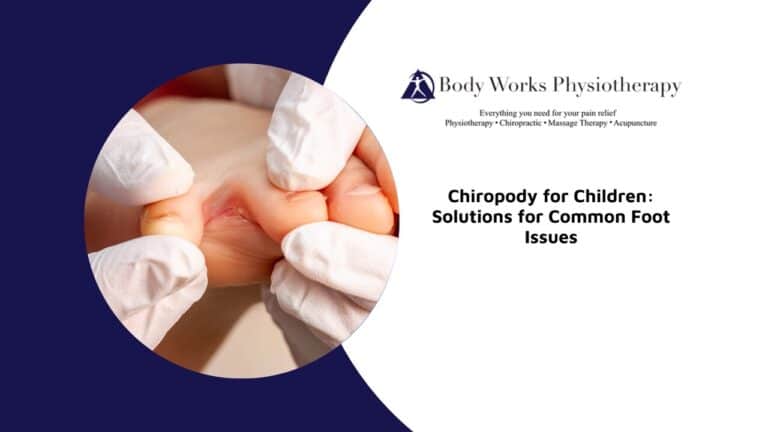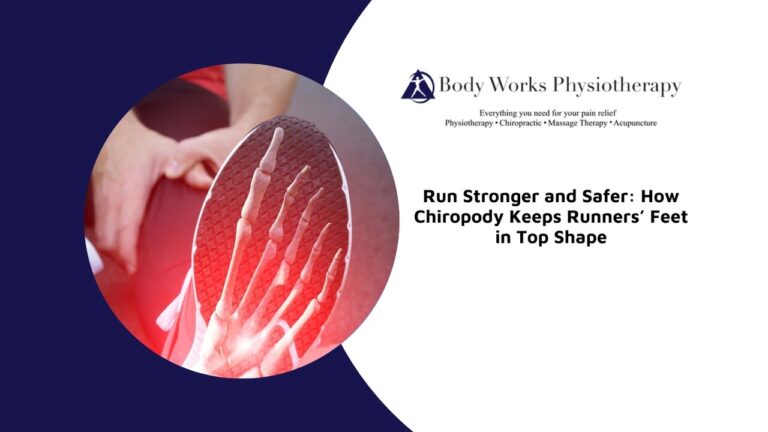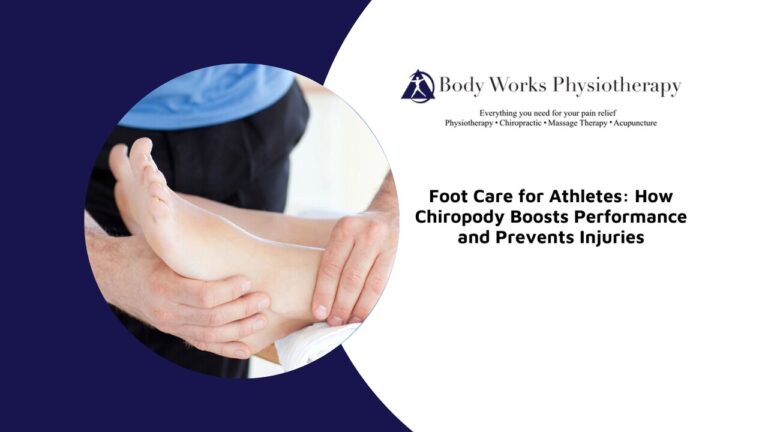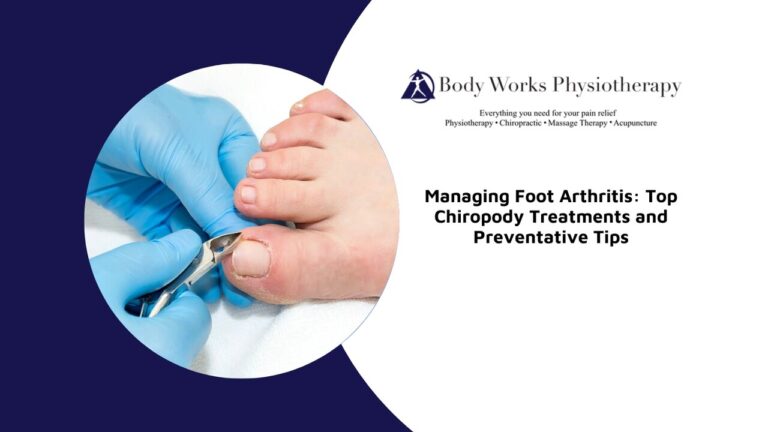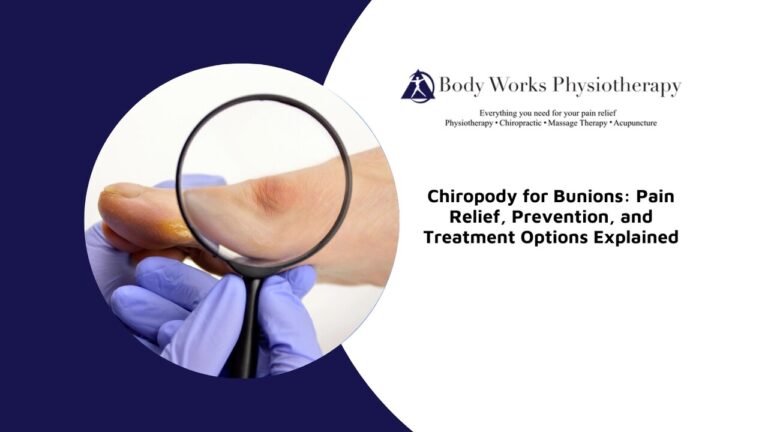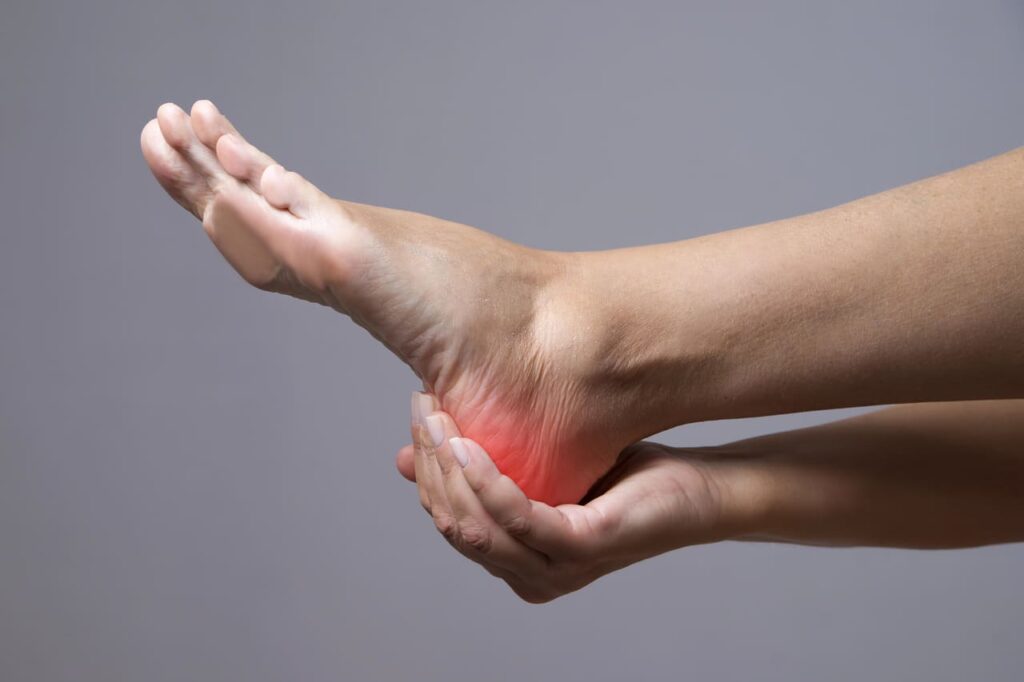
Plantar fasciitis is one of the most common causes of heel pain, often triggered by inflammation in the thick band of tissue that supports the arch of your foot. If left untreated, it can interfere with daily activities and cause ongoing discomfort with every step. In this blog, we’ll explore how chiropody helps manage plantar fasciitis—from pain relief and corrective orthotics to long-term prevention. Whether you just started experiencing plantar fasciitis or are dealing with recurring symptoms, understanding your treatment options can help you take the right steps toward recovery.
How Chiropody Helps Manage Plantar Fasciitis
Chiropody helps manage plantar fasciitis by targeting both the symptoms and the underlying causes of heel pain. A chiropodist will begin by assessing your foot structure, walking pattern, and daily habits to understand what’s contributing to the strain on your plantar fascia. Treatment typically includes a combination of strategies such as reducing inflammation, correcting poor foot mechanics, and supporting proper alignment. Custom orthotics are often prescribed to relieve pressure and improve foot function, while footwear recommendations and exercise routines help support long-term recovery.
By addressing inflammation, improving biomechanics, and guiding preventive care, chiropody provides an effective, non-invasive approach to managing plantar fasciitis and reducing the likelihood of recurrence.
Treatments Chiropodists Offer for Plantar Fasciitis Pain Relief
Chiropodists use several targeted treatments to relieve pain, reduce inflammation, and improve foot mechanics:
- Custom Orthotics: Designed to support the arch, correct alignment, and reduce strain on the plantar fascia.
- Shockwave Therapy: Uses acoustic waves to stimulate healing, improve blood flow, and reduce pain.
- Taping Techniques: Stabilizes the arch and offloads pressure from the plantar fascia during activity.
- Footwear Guidance: Recommendations for shoes with proper support, cushioning, and structure.
- Manual Therapy: Hands-on techniques may be used to loosen tight tissues around the heel and arch.
- Anti-Inflammatory Measures: Includes icing protocols, stretches, and guided use of pain relief methods.
- Stretching Programs: Prescribed exercises help relieve tension and promote long-term flexibility.
Together, these treatments aim to reduce pain and improve foot function as efficiently as possible.
Managing Plantar Fasciitis: Chiropody and Custom Orthotics
Custom orthotics are one of the most effective tools in managing plantar fasciitis, particularly when the condition stems from poor foot mechanics or abnormal gait patterns. These specially designed insoles provide structured support to the arch of the foot, helping redistribute pressure evenly and reduce the excessive strain placed on the plantar fascia. Unlike over-the-counter inserts, custom orthotics are crafted to match the unique contours of your feet.
A chiropodist begins the process by conducting a thorough biomechanical assessment, which may include gait analysis, foot pressure mapping, and a hands-on examination of joint movement and alignment. Using this information, they create orthotics that address your specific needs—whether it’s correcting overpronation, improving heel cushioning, or stabilizing the arch. When used consistently, custom orthotics not only reduce pain but also help correct underlying mechanical imbalances that contribute to plantar fasciitis, offering both immediate relief and long-term correction.
Lifestyle Changes and Exercises Recommended for Plantar Fasciitis Relief
Chiropodists often recommend practical daily changes to support healing and prevent recurrence:
- Supportive Footwear: Wearing proper shoes with arch support helps reduce daily strain on the fascia.
- Weight Management: Reducing excess weight lessens pressure on the feet and improves recovery.
- Activity Modifications: Avoiding high-impact movements during flare-ups gives the fascia time to heal.
- Stretching Exercises: Includes calf and toe stretches to reduce tightness and improve flexibility.
- Foot Rolling Techniques: Rolling over a frozen bottle or massage ball can ease soreness in the arch.
- Strengthening Exercises: Simple foot and ankle exercises help build support and prevent imbalances.
- Postural Adjustments: Small tweaks to standing or walking habits can reduce stress on the heel.
These small, consistent changes can significantly enhance recovery and help prevent future flare-ups.
How Long Does It Take to See Improvement in Plantar Fasciitis With Chiropody Care?
The timeline for improvement with chiropody care varies depending on the severity of the condition, how long it has been present, and the individual’s commitment to their treatment plan. However, many people begin to notice meaningful relief from pain and stiffness within 4 to 6 weeks of starting care. Early improvements often come from reduced inflammation and better foot support, especially if custom orthotics or proper footwear are introduced quickly.
For more chronic or severe cases, recovery may take several months and require a more structured combination of therapies, including shockwave therapy, stretching routines, and manual treatment. Adherence plays a key role—people who follow their chiropodist’s guidance on wearing orthotics consistently, completing daily exercises, and avoiding aggravating activities tend to recover faster and with better long-term outcomes. Regular follow-up visits also help monitor progress and make adjustments to treatment as needed.
Preventing the Recurrence of Plantar Fasciitis: How Chiropody Helps
Preventing the recurrence of plantar fasciitis is a key focus of chiropody care. Once the acute pain is managed, a chiropodist will work to identify and address the underlying causes that may have contributed to the initial injury. This includes evaluating foot structure, gait mechanics, footwear choices, and lifestyle habits that place repetitive stress on the plantar fascia. Custom orthotics continue to play an important role in prevention, as they support proper alignment and help distribute pressure more evenly across the foot. A chiropodist may also provide education on how to choose appropriate footwear for different activities, implement stretching routines to maintain flexibility, and modify activities to avoid re-injury.
Regular foot assessments can help identify early warning signs of strain before they escalate, allowing for early intervention. With these proactive strategies in place, chiropody not only treats the condition but also helps significantly reduce the chances of plantar fasciitis returning in the future.
Chiropody Consultation for Plantar Fasciitis: What to Expect
A chiropody consultation is focused on identifying the cause of your heel pain and creating a personalized plan:
- Medical History Review: Discusses your symptoms, daily habits, and any past injuries or treatments.
- Foot Examination: Assesses tenderness, flexibility, and arch structure to pinpoint problem areas.
- Gait Assessment: Analyzes walking patterns to detect imbalances or poor mechanics.
- Assessment Tools: May include pressure mapping or scans to guide orthotic design and treatment.
- Treatment Plan: Includes recommended interventions such as orthotics, stretches, or shockwave therapy.
- Education and Advice: Covers at-home care, footwear guidance, and strategies for long-term prevention.
The consultation sets the foundation for a personalized care plan designed to relieve pain and restore comfort.
Foot Pain No More
Effective plantar fasciitis care starts with identifying and addressing the root causes of your foot pain. Chiropody offers targeted, non-invasive treatments that improve alignment, relieve stress on the plantar fascia, and promote lasting recovery. From custom orthotics to personalized exercise routines, this approach supports both short-term relief and long-term foot health.At Body Works Physiotherapy in Scarborough, our chiropody team is here to help you walk comfortably again. Book an appointment today to start your path to pain-free movement and stronger, healthier feet.

